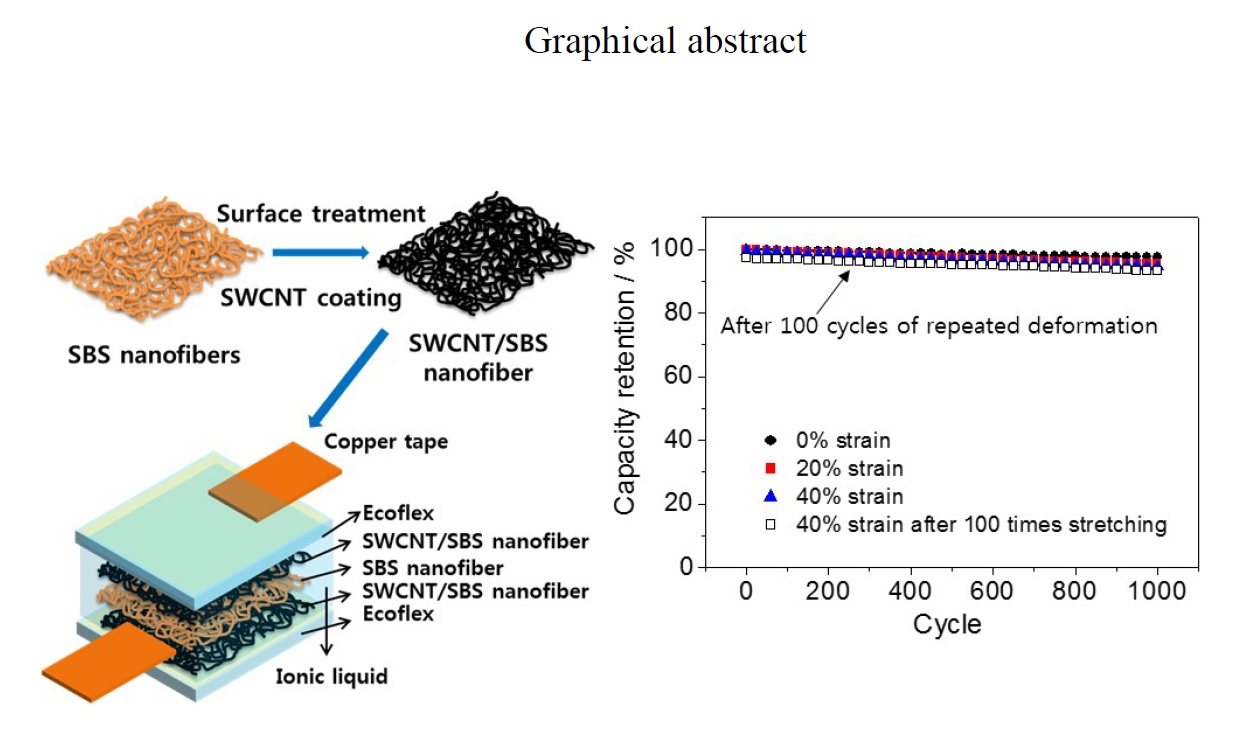We report a new fabrication method for a fully stretchable supercapacitor based on single wall carbon nanotube (SWCNT)-coated electrospun rubber nanofibers as stretchable supercapacitor electrodes. The deposition conditions of SWCNT on hydrophobic rubber nanofibers are experimentally optimized to induce a uniform coating of SWCNT. For surfactant-assisted coating of SWCNT, both water contact angle and sheet resistance were the lowest compared to the cases with other surface treatment methods, indicating the most effective coating approach. The excellent electromechanical properties of this electrode under the stretching condition is demonstrated by the measurement of Young’s modulus and normalized sheet resistance. This superb tolerance of the electrode with respect to stretching results from i) high aspect ratios of both nanofiber templates and the SWCNT conductors, ii) highly elastic nature of rubbery nanofiber, and iii) strong adherence of SWCNT-coated nanofiber on the elastic ecoflex substrate. Electrochemical and electromechanical measurements on the stretchable supercapacitor devices reveal that the volumetric capacitance (15.2 F cm-3 at 0.021 A cm-3) of the unstretched state is maintained for strains of up to 40 %. At this level of strain, the capacitance after 1,000 charge/discharge cycles is not significantly reduced. The high stability of our stretchable device suggests potential future applications in various types of wearable energy storage devices.

